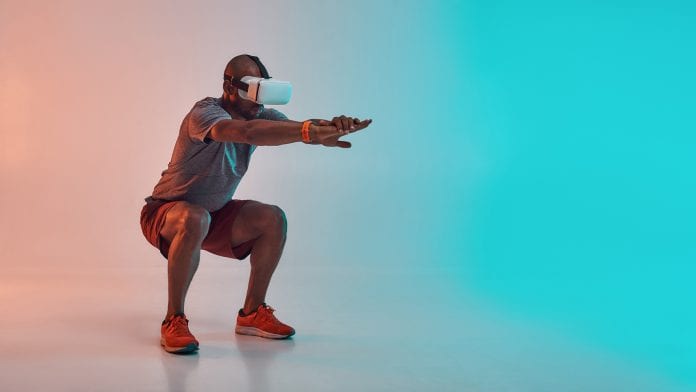
Physiotherapy could now be completed at home thanks to the combination of Virtual Reality and 3D technology.
Researchers have combined Virtual Reality (VR) and 3D motion capture technology which could help physiotherapy patients to complete their exercises at home.
Currently, prescribed physiotherapy is often undertaken at home and patients rarely receive any guidance other than a leaflet of sketches or static photographs to instruct them how to complete their exercises. This leads to poor adherence, with patients becoming anxious about not getting the exercise right.
The paper, Timing and correction of stepping movements with a virtual reality avatar, was published in the journal PLOS ONE, by researchers at WMG, University of Warwick, and focussed on whether people are able to accurately follow the movements of a virtual avatar.
Following a virtual guide
The combination of virtual reality technology combined, and 3D motion capture allows real movements to be accurately translated onto an avatar that can be viewed in a virtual environment.
The researchers at the Institute of Digital Healthcare, University of Warwick are investigating whether this technology can be used to provide guidance to physiotherapy patients, by providing a virtual physiotherapist in the home to demonstrate exercises.
For the study, the researchers investigated whether people were able to accurately co-ordinate and follow the movements of an avatar in a virtual environment, asking participants to step in time with an avatar viewed through a VR headset.
The researchers slowed down or speeded up one of the avatar’s steps, such that the participants would have to correct their own stepping movement to stay in time. The team measured whether this had an effect on the participants timing
Lead author, Omar Khan from WMG, University of Warwick commented: “If participants were observed to correct their own stepping to stay in time with the avatar, we knew they were able to accurately follow the movements they were observing. We found that participants struggled to keep in time if only visual information was present. However, when we added realistic footstep sounds in addition to the visual information, the more realistic multisensory information allowed participants to accurately follow the avatar.”
Advancing healthcare with technology
Dr Mark Elliott, Principal investigator on the project at WMG, University of Warwick added: “There is huge potential for consumer VR technologies to be used for both providing guidance to physiotherapy exercises, but also to make the exercises more interesting. This study has focussed on the crucial question of how well people can follow a virtual guide.”
Professor Theo Arvanitis, co-author and Director of the Institute of Digital Healthcare, said: “Our work and digitally-enabled technological solution can underpin transformative health innovations to impact the field of physiotherapy and have a direct benefit to patients’ rehabilitation.
“We now plan to investigate other types of movements working closely in partnership with physiotherapists, to establish the areas of physiotherapy that will benefit most from this technology.”









